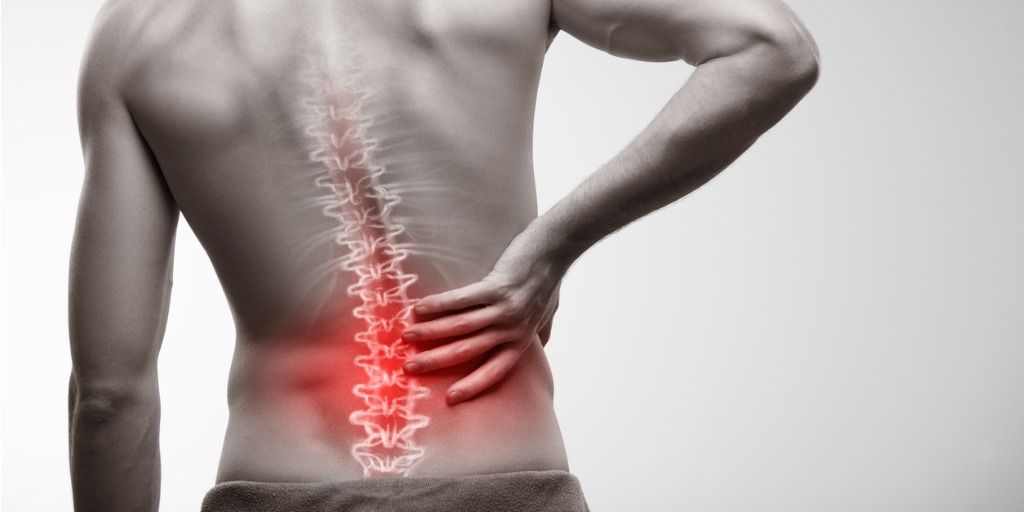Exercise Rehabilitation Following a Spinal Fusion
The human spine plays an integral part in allowing the body to move freely and bend with flexibility, while also acting as the body’s central support structure (Oxland, 2015). Patients that present with symptomatic instability, structural deformities, or elevated pain, may be treated with an interbody spinal fusion (Enders & Coughlin et al, 2020). Common spinal deformities including scoliosis, kyphosis, and lordosis, which are commonly caused by degeneration, are typical precursors for spinal fusion surgery.
Spinal fusion surgery is a neurosurgical or orthopaedical surgical technique where a bone graft is added to a segment of the spine. Bone grafts are commonly taken from the patients’ hip, harvested from cadaver bone, or a manufactured synthetic bone substitute (Ullrich, 2013). This sets up a biological response in the body that causes the bone graft to grow between the two vertebral elements to create a bone fusion (Ullrich, 2013). Two vertebral segments are fused together to stop the motion at one segment. Cervical and Lumbar spinal fusions have provided a greater than 90% likelihood of relieving radicular symptoms and stabilisation, or improving myelopathy (Levin & Hale et al, 2007). Following spinal fusion surgery, stiffness and soreness are likely to occur, thus exercise rehabilitation has long been a common feature in the postoperative management of patients undergoing this procedure (Madera & Brady et al, 2017).
Rehabilitation following a Spinal Fusion:
Postoperatively, physical therapy and rehabilitation modalities are frequently used to improve patients’ activity levels, range of motion, and core strength (Madera & Brady et al, 2017). Immediately following surgery, short distance walks are recommended in conjunction with static lower limb musculature stretching, in line with specialist recommendations (Miller, 2016). Strengthening exercises have long been the cornerstone of physical therapy. Evidence states that motor control and strengthening exercises play a vital part in postoperative rehabilitation as neutral spine exercises are recommended to increase core strength and improve disability index scores (Madera & Brady et al, 2017). As trunk muscle function and health related fitness in patients with chronic back pain are often extensively impaired, comprehensive training programmes are required. Effectiveness of exercise interventions are partly adherence dependent, thus supervised rehabilitation assist in goal setting, as well as monitoring progression and motivation (Tarnanen & Neva, 2012)
When looking at the current literature, multiple studies support a multidisciplinary approach, using evidence-based guidelines, to deliver the best outcomes for individuals following spinal fusion surgery (Madera & Brady et al, 2017.)
James McNally
Workers Compensation Specialist ‑ Team Leader East (AEP, ESSAM)
Exercise Rehabilitation Services
References
Oxland, T. (2015). Fundamental biomechanics of the spine – What we have learned in the past 25 years and future direction. Journal of Biomechanics, 49(6), 817-832.
Enders, J., Coughlin, D., Mroz, T., Vira, S. (2020). Surface Technologies in Spinal Fusion. Neurological Clinics in North America, 31(1), 57-64.
Ullrich, P. (2013). Lumbar Spinal Fusion Surgery. Spine Health.
Levin, D., Hale, J., Bendo, J. (2007). Adjacent segment degeneration following spinal fusion for degenerative disease. Health and Medicine, 65(1).
Madera, M., Brady, J., Deily, S., McGinty, T., Moroz, L., Singh, D., Tipton, G., Truumees, E. (2017). The role of physical therapy and rehabilitation after lumbar fusion surgery for degenerative disease: a systematic review. Journal of Neurosurgery, 26(6), 694-704.
Miller, R. (2016). Guide to Physical Therapy After Spinal Fusion. Spine Health.
Tarnanen, S., Neva, M., Dekker, J., Hakkinen, K., Vihtonen, K., Pekkanen, L., Hakkinen, A. (2012). Randomised controlled trial of postoperative exercise rehabilitation program after lumbar spine fusion: study protocol. BMC Musculoskeletal Disorders, 13(1), 123.




